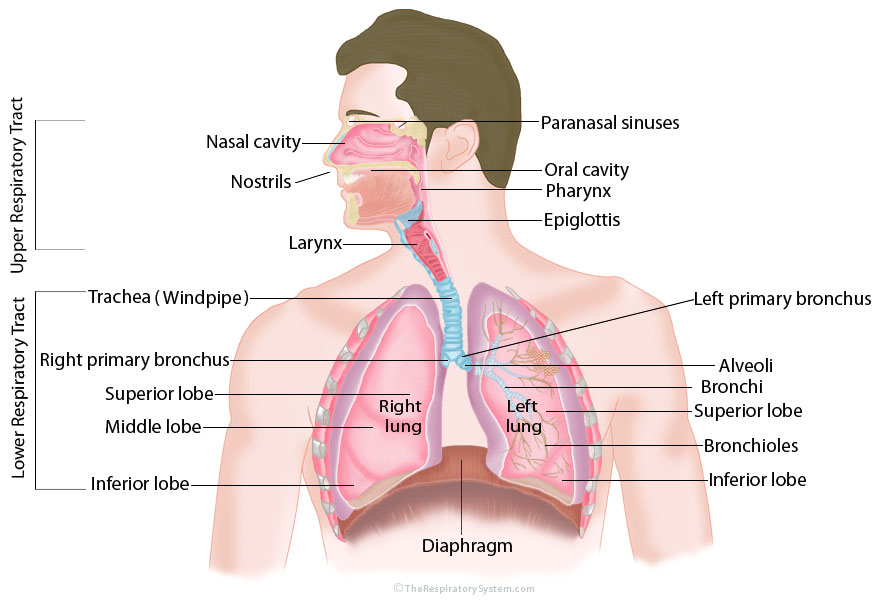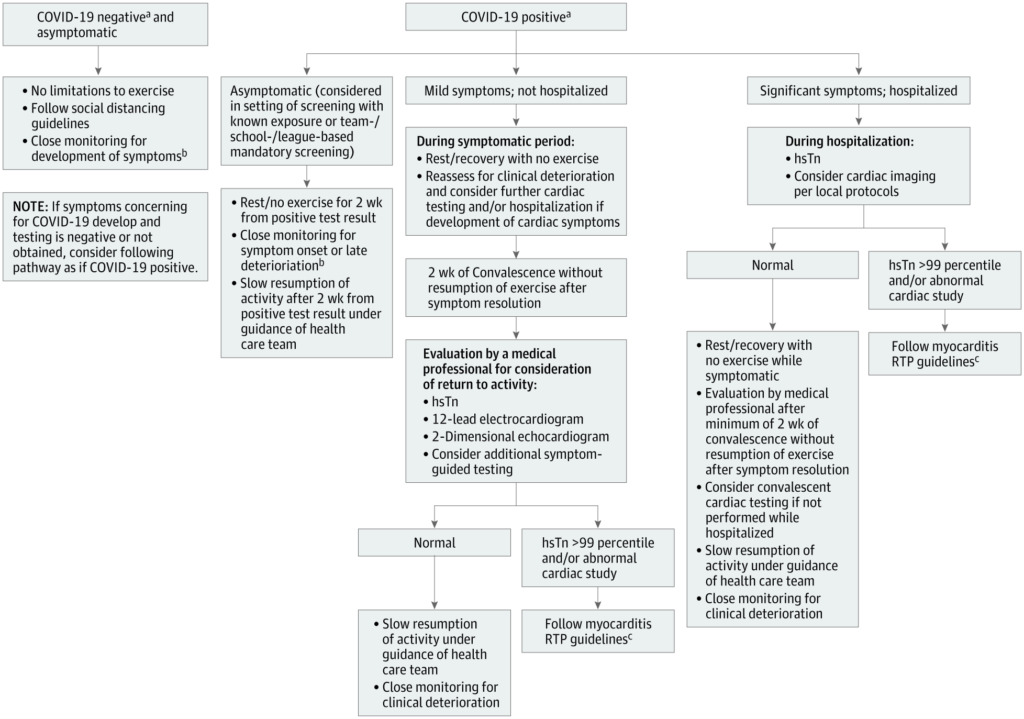
With a global pandemic of coronavirus currently ongoing, many unanswered questions remain. While we know that infection with coronavirus can have significant health effects, some of which can be fatal, we don’t yet know what long-term health consequences may follow. Coronavirus has a detrimental impact on multiple organs in our body, including our heart, lungs, and gastrointestinal tract.
Furthermore, coronavirus seems to affect different people in different ways. For individuals engaging in sport or exercise, it can be challenging to determine when it would be safe to exercise after having COVID-19.
Luckily, doctors have developed clinical guidelines for returning to sport and exercise after being infected with coronavirus. Today we’ll discuss the impact of coronavirus on the cardiovascular system (heart and blood vessels) of the body, as well as the appropriate guidelines to follow for returning to exercise/sport after coronavirus infection.
General Information About COVID-19
The most common symptoms of coronavirus infection are fever, dry cough, fatigue, sore throat, myalgia, and headache. Less common symptoms include nausea, diarrhea, and loss of taste and smell.
Symptoms typically present as soon as 2 days and up to 14 days after exposure to the virus. The virus is transmitted through close person to person contact via respiratory droplets (e.g. breathing, coughing, sneezing, etc.).
Furthermore, the basic reproduction number for the COVID-19 virus is 2-3. This means for every person infected with coronavirus, they are expected to infect 2-3 other susceptible individuals! In comparison, the seasonal influenza virus is only expected to infect 1.3 other susceptible individuals.
While most individuals will experience only a mild illness, some will have severe symptoms which may even require hospitalization. In about 4.7% of the population, critical illness occurs in which hospitalization and advanced life support are required. The global mortality rate is around 2% for the COVID-19 virus, which is even higher for older individuals (over 70) and those with pre-existing cardiovascular and respiratory conditions.
Cardiovascular impact of COVID-19
The COVID-19 virus can have profound effects on both the cardiovascular and respiratory systems of the human body. Many patients with coronavirus will present with raised troponin levels (a chemical marker in blood). Raised troponin levels are a sign of significant heart injury, which means these individuals are more likely to require mechanical ventilation and are at higher risk for mortality.
The raised troponin levels may be a result of systemic inflammation due to the virus. Furthermore, myocyte necrosis (death of heart muscle cells) may occur as a consequence of strain on the heart from lack of oxygen. This can occur secondary to respiratory illness or blood clots in the lungs from COVID-19.
Individuals with chronic heart conditions or subclinical heart conditions (heart conditions that have not yet been identified due to lack of symptoms) may be more likely to experience blood clots, leading to further heart complications. It is also possible for the body to experience a severe systemic reaction to the coronavirus, leading to stress-induced cardiomyopathy (heart disease).
Finally, myocarditis (inflammation of the heart) may occur from infection with coronavirus, as a proportion of individuals diagnosed with COVID-19 present with chest pain and palpitations rather than respiratory symptoms.
When Can I Return to Exercise/Sport After Infection with Coronavirus?
While experts have discovered a lot of information about the spread of coronavirus and its impact on the human body, there are still many limitations to our understanding. Currently, experts are unsure of the prevalence of asymptomatic cases within the community, the prevalence of cardiac injury in non-hospitalized individuals with coronavirus, and the long term outcomes after cardiac injury from coronavirus.
With those limitations being kept in mind, members of the American College of Cardiology’s Sports & Exercise Cardiology Council have created a clinical framework for return to play during the COVID-19 pandemic (pictured below).
As we can see in the flow chart above, the guidelines have separated individuals into COVID-19 negative and positive. Of course if you are asymptomatic and COVID-19 negative, there are no limitations to participation in exercise or sport. It is recommended that these individuals maintain social distancing guidelines and continue to monitor for symptoms.
Individuals who are COVID-19 positive may be separated into three categories: asymptomatic, mild symptoms, and significant symptoms requiring hospitalization.
For individuals who are completely asymptomatic but still test positive for COVID-19, it is recommended to rest/not exercise for 2 weeks after the positive test result. During this time, it is important to closely monitor symptoms. Once those 2 weeks have passed, these individuals may slowly resume physical activity under the guidance of a healthcare team.
Individuals that test positive for COVID-19 and have mild symptoms are recommended to rest until symptoms resolve. Once symptoms have fully resolved, it is recommended these individuals wait another 2 weeks prior to returning to exercise. Furthermore, these guidelines recommend this category of patients receive an evaluation by a medical professional that includes measuring heart activity before returning to exercise/sport. If the results of this evaluation are normal, slow resumption of exercise/sport can occur with close monitoring for any symptoms or clinical changes. If the results of this evaluation are abnormal, there are further cardiac injury guidelines for return to exercise that will need to be followed.
Finally, for individuals who test positive for COVID-19 and experience significant symptoms that lead to hospitalization, the recommendations are similar to those who test positive but were not hospitalized. These individuals should avoid exercise while symptomatic, and for an additional 2 weeks after symptoms resolve. Once this time has passed, medical evaluation is essential prior to returning to exercise. Again, if the medical evaluation is normal, this population may slowly return to exercise/sport while monitoring for symptoms or clinical changes. If the medical evaluation is abnormal, these individuals will need to follow further guidelines for return to exercise that are specific to cardiac injury.
These guidelines provide a simplified framework for determining when it is safe and appropriate to return to exercise/sport after an infection with the COVID-19 virus. That being said, it will still be important to consider how quickly we return to exercise/sport, as this can influence risk of injury. For more information on that, check out this blog post.
Still not sure what to expect after coronavirus infection? Call us at 519-895-2020, or use our online booking tool on www.strivept.ca to book an appointment with one of our knowledgeable sports physiotherapists in Kitchener, and they will be sure to help you understand your injury.
Cheers,
Liam Newlands
Physiotherapist at Strive Physiotherapy and Performance

